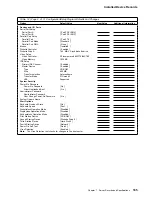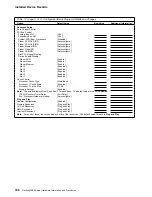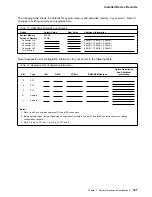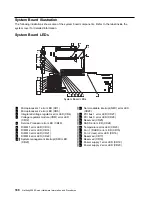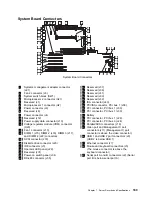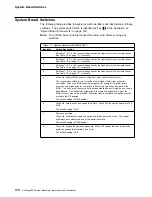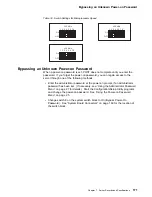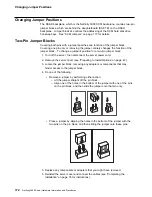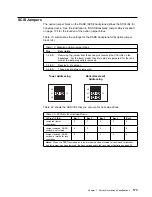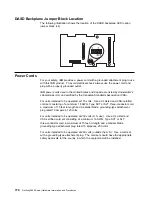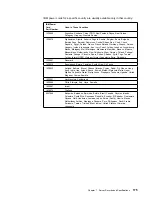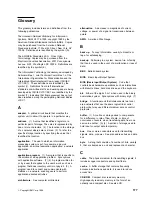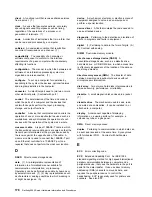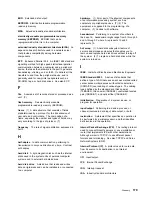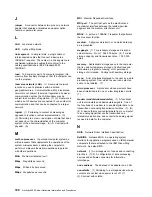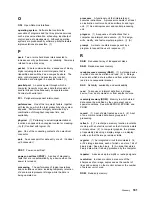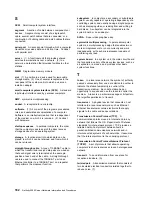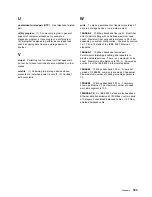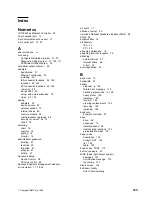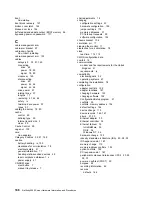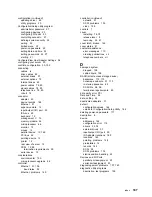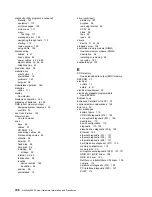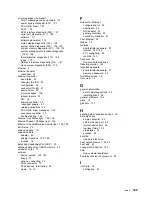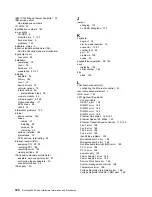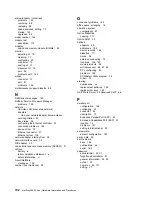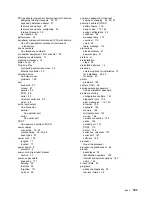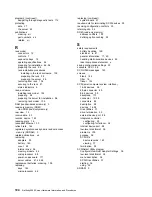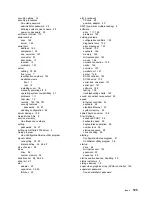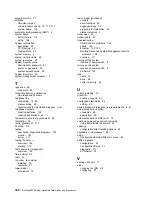
J
jumper. A connector between two pins on a network
adapter that enables or disables an adapter option,
feature, or parameter value.
L
LAN. Local area network.
LED. Light-emitting diode.
link segment. In simple terms, a single cable or
interconnected cables that connect a device to a
10BASE-T repeater. The cables in a link segment are
unshielded twisted-pair cables that conform to the
cabling specifications in IEEE Standard 802.3
10BASE-T.
load. To bring all or part of a computer program into
memory from auxiliary storage so that the computer can
run the program.
local area network (LAN). (1) A computer network
located on a user's premises within a limited
geographical area. Communication within a local area
network is not subject to external regulations; however,
communication across the LAN boundary may be
subject to some form of regulation. (T) (2) A network in
which a set of devices are connected to one another for
communication and that can be connected to a larger
network.
logical. (1) Pertaining to content or meaning as
opposed to location or actual implementation. (A)
(2) Pertaining to a view or description of data that does
not depend on the characteristics of the computer
system or the physical storage. (A) (3) Contrast with
physical. (A)
M
math coprocessor. In personal-computer systems, a
microprocessor that supplements the operations of the
system microprocessor, enabling the computer to
perform complex mathematical operations in parallel
with other operations.
MAU. Medium attachment unit.
Mbps. Megabits per second.
Mbps. Million bits per second.
MBps. Megabytes per second.
MDI. Medium Dependent Interface.
MDI port. The port that acts as the electrical and
mechanical interface between the twisted-pair link
segment and the medium attachment unit.
MDI-X. A port on a 10BASE-T repeater that performs
the crossover function.
medium. A physical material in or on which data may
be represented.
megabyte. (1) For processor storage and real and
virtual memory, 2
20
or 1 048 576 bytes. (2) For disk
storage capacity and transmission rates, 1 000 000
bytes.
memory. Addressable storage space in the computer
that is used for temporary storage of instructions and
data while a program is running, or for permanent
storage of microcode. Contrast with auxiliary storage.
menu. A list of options displayed to the user by a data
processing system, from which the user can select an
action to be initiated. (T)
microprocessor. A processor whose elements have
been miniaturized into one or a few integrated circuits.
(T)
modem (modulator/demodulator). (1) A functional
unit that modulates and demodulates signals. One of
the functions of a modem is to enable digital data to be
transmitted over analog transmission facilities. (T) (A)
(2) A device that converts digital data from a computer
to an analog signal that can be transmitted on a
telecommunication line, and converts the analog signal
received to data for the computer.
N
NDIS. Network Driver Interface Specification.
NetBIOS. Network BIOS. An operating system
interface for application programs used on IBM personal
computers that are attached to the IBM Token-Ring
Network. See also BIOS.
network. (1) An arrangement of nodes and connecting
branches. (T) (2) A configuration of data processing
devices and software connected for information
interchange.
node address. The address of an adapter on a LAN.
nonvolatile. (1) Pertaining to a storage device whose
contents are not lost when power is cut off. (T)
(2) Contrast with volatile.
180
Netfinity 5000 Server Hardware Information and Procedures

